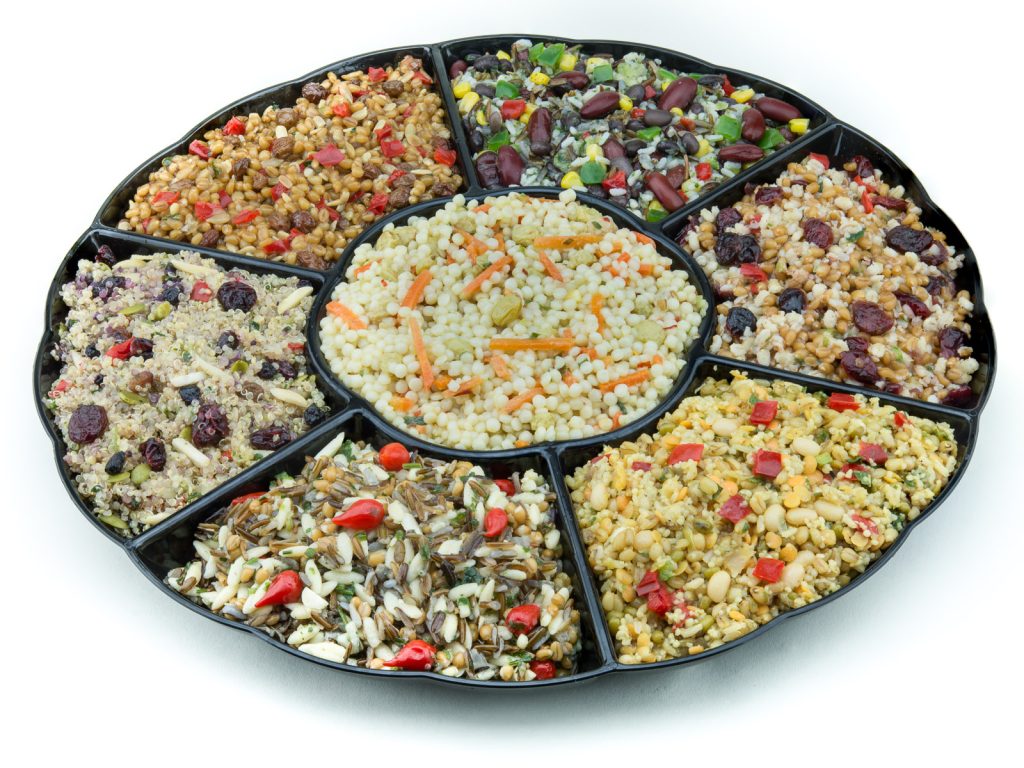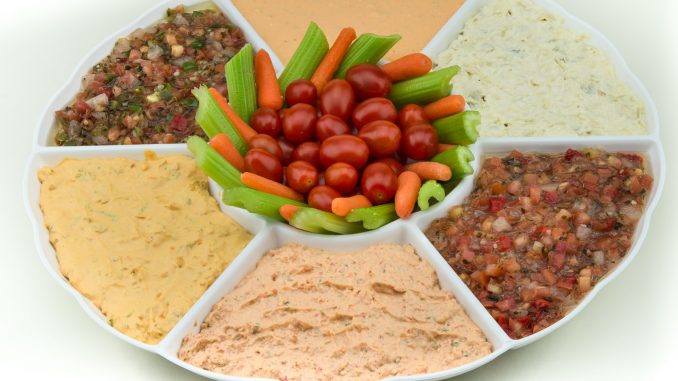Event Staple Makes A Return
August 1, 2021 | 7 min to read
As the United States emerges from COVID-19, the demand for party platters is increasing, revitalizing social gatherings. Paul Baker of St Pierre Bakery highlights the transformation of this product segment, which now caters to evolving consumer preferences and includes a variety of indulgent and healthy options. Retailers must enhance their platter offerings to appeal to diverse appetites and occasions, providing flexibility and creativity to meet the rising expectation for memorable at-home celebrations.

As the United States emerges from the worst of COVID-19, entertaining is taking on a fresh new glow. Food offerings that target social occasions are again assuming a prominent place in the minds of consumers as they celebrate anew after largely being bottled up for more than a year. Party platters are among those products basking in the spotlight after assuming a lower profile during a time of muted, limited socializing.
Paul Baker, founder of St Pierre Bakery, based in France, says the party platter segment was transformed during the pandemic, and retailers now have an opportunity to take advantage of a moment when entertaining and social gatherings are surging.
“Pre-pandemic, [party platters] had become a staple in the deli as the idea of ‘charcuterie’ and meals that could be shared as part of a social occasion,” Baker says. “Obviously, COVID has changed the appeal, with restrictions in place that put social occasions on the backburner. However, as we return to normal, it will be vital for retailers to reinstate their party platter offerings in a way that’s bigger, better and more enticing than ever before, in order to tempt shoppers back to the segment. After so long without entertaining, operators will also recognize the pressure to make at-home celebrations even more memorable, highlighting the need for a show-stopping platter.”
Baker noted that the Chicago-based IRI market research company released a report earlier this year showing deli prepared foods are accelerating in growth, meaning “there’s an opportunity for operators ‘to strike while the iron’s hot,’” he says.
The Art of a Successful Platter
Carl Cappelli, senior vice president of sales and business development for Don’s Prepared Foods, based in Schwenksville, PA, says the party platter segment has grown both more indulgent and healthier in recent years. He adds a successful party platter offers “something for everyone,” striking an appealing balance that caters to the appetites of each person in attendance at an event. For example, Don’s dips are more indulgent and less healthy than its vegetarian clean grain salads, and both are used on party platters.
Baker says that the idea of a successful party platter has changed as consumers’ eating preferences have evolved.
“There have been significant shifts in eating habits,” Baker says. “The rise of veganism, plant-based foods, flexitarianism—the party platter has a much broader audience to answer to than ever before. There also are new considerations around mealtimes and occasions. Not only must any party platter offering cater to a new audience, but it might also be required for an occasion, such as brunch, which is becoming increasingly popular.”
James Anderko, vice president of sales and marketing for Hingham, MA-based Venus Wafers, says party platters used to feature more straightforward, basic offerings. That has changed in recent years.
“We’ve seen a real uptick of more upscale offerings,” Anderko says. “As far as the cheeses involved, the meats involved, the crackers involved.”
Greg Klein, chief marketing officer at Lakeview Farms in Delphos, OH, agrees.
“The selection has grown in terms of components included (originally meat, cheese and crackers), now including olives, pickles, dips, etc.,” Klein says. “Also, the presentation trays/boards have greatly improved.” For example, Klein says he likes the “charcuterie-looking boards.”
A move toward more upscale platters, Anderko says, means “the price points are a little bit higher, and sometimes it’s a bit smaller platter.”
Anderko says he believes consumers looked for more variety in party platters during the pandemic in part as a way of breaking up their “normal routine and trying different things.”
“The biggest thing is to offer different varieties,” Anderko says. “It doesn’t all have to be meat and cheese—there could be fruit on there, and there could be dips. You can be creative with it.”
Baker agrees that variety is crucial to keeping shoppers interested, including “a good balance of new versus reliable.”
“There are other factors to feed into this, too,” Baker says. “Platters offer flexibility for a range of guests with different appetites and are easily scalable for hosts. For consumers, they can deliver the ultimate personalized platter if they buy products individually and create their own, so operators have to offer added value. By using products that are already stocked, there’s no additional cost to the operator beyond resource, but they can answer to shoppers looking for premium, unique, fresh food—all of which are drivers, particularly in in-store bakery.”

Market Positioning
Cappelli says platters work best when retailers assemble them because they are the “experts” in platters as well as sandwiches, deli sides and many other items that might make up a platter.
As an alternative or supplement to assembling and packaging platters and displaying them in deli sections, Cappelli says deli departments can show or display consumers’ photos of sample party platters that they provide as a way of highlighting a variety of offerings and then assembling them to order. Deli departments, he says, are “very good at assembling and packaging platters.”
“They have the materials and the ‘know how,’ Cappelli says. “Remember, consumers want fresh.”
One of the strengths of party platters is that these can work for different occasions, not just parties, such as for snacks, lunches, light meals and tailgates, Klein notes. Klein says a mix of options in the deli helps give consumers a range of choices to fit both their shopping and food preferences. He says a key to marketing and merchandising platters today is “giving the consumer a range of size/price/assortment options for various usage occasions.”
“An assortment of pre-packaged (manufacturer) and in-store made trays provides an attractive selection and unique options for consumers,” Klein says.
Anderko says savvy retailers and producers also create distinctive, tailored platters that fit particular events, seasons and themes and market them accordingly—for instance, those designed for tailgating during football season or tied to specific holidays that feature themed treats.
Cappelli says platters are ideal fits for summer outings, family gatherings and tailgate, are another way for retailers “to own the holidays with cool and unique offerings”—and should be marketed accordingly.
Baker noted that mealtimes have been transformed by the pandemic in a way that benefits platters.
“COVID-19 saw more people spending time at home or living ‘more slowly’ than pre-pandemic,” Baker says. “This more relaxed approach to mealtime schedules has put breakfast back on the map and driven the popularity of brunch. Platters that cater to these occasions offer brilliant flexibility. They can be themed savory or sweet, American classics or European delights.”
Anderko says he has seen changes in the placement of platters in stores.
“There’s more visibility,” Anderko says. “Most of the time where I saw them before is where packaged lunch meats were. They are still on the perimeter of the store, but they are more in the fresh area now. I’ve seen a couple chains that have a whole endcap set up of wine and cheese that these platters are part of.”
Taking Advantage of the Moment
Ultimately, Baker says, selling party platters is about offering something that stands out from the ordinary.
“A well-packaged and presented platter is something you can proudly take to someone else’s event, which strays into the realm of gifting,” Baker says. “If operators can answer this to elevate their deli platter offering, [while] providing fresh product, then they will draw footfall back to the segment.”
Baker says St Pierre provides inspiration for consumers and retailers for possible uses of its products on its website and social media channels and through in-store merchandising, feeding into key trends that include the party platter. Baker says successfully marketing and merchandising platters today requires an understanding of the key drivers behind purchases.
“Generally, these are around the premium nature or quality of product, fresh product and the experience it provides,” Baker says. “Retailers need to offer something that takes the pressure off the shopper. For example, a time-pressed shopper doesn’t want to look for multiple products, think about presentation or do all the prep.”
Baker pointed to a May report from the Madison, WI-based International Dairy Deli Bakery Association (IDDBA) that indicated the trend for celebratory products is not slowing, and he says supermarket delis can take advantage in a variety of ways to create a market for platters that have a festive vibe.“Shoppers are returning to celebrations and making more of what might previously have been more ‘low-key’ affairs,” Baker says. “There is an opportunity here to create destinations.” DB
5 of 9 article in DeliBusiness Aug/Sept 2021

